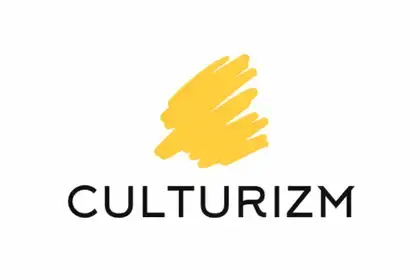

What is Contemporary Literature? Modern Literary Trends 2024
- 24 March 2024
- Contemporary

“ What is Contemporary literature ?”, the body of written works from the post-World War II era to today, offers a window into the modern human experience. This article will guide you through the defining characteristics of contemporary literature, showcasing how it mirrors our rapidly evolving society. Discover how contemporary writers tackle themes like identity, technology, and global issues , providing both reflection and direction in a world brimming with change. Engage with the stories that shape our current narrative and find your own place within the rich tapestry of today’s literary landscape.
Table of Contents
Defining What is Contemporary Literature
When we explore what is contemporary literature , we dive into a vibrant tapestry of narratives and styles that reflect our ever-evolving world. Whether it’s the gripping tale of a novel, the delicate verses of poetry , or the captivating layouts of graphic novels, contemporary literature is a mirror to our times, capturing the complexities of life since the mid-20th century.
Contemporary literature is a vibrant reflection of our ever-evolving world, capturing life’s complexities through diverse genres and forms. Notable for its depth and variety, it includes fiction , memoirs, and graphic novels, with literary movements like postmodernism influencing its narrative styles. It’s a realm where magical realism and metafiction challenge perceptions, and themes of identity, race, gender, and the environment are explored with urgency and innovation.
Genres and Forms
In contemporary literature, we encounter a plethora of genres catering to diverse readerships. At the heart of these genres is fiction , often presented through the emotive journey of a novel . Novels grant us the luxury to lose ourselves in imagined spaces, sometimes even offering the thrilling escapes of science fiction . We also see a rise in Young Adult (YA) Fiction , a genre that not only captivates the youth but also adult audiences with its bold themes and relatable characters.
Here are some more important Genres of Contemporary Literature:
- Memoirs and Autobiographies offer a true window into the lives of others, providing raw, personal insights
- Literary Fiction is renowned for its depth, character development, and focus on intricate themes
- The realm of graphic novels has expanded, combining visual art with storytelling to produce an immersive experience
Literary Movements and Styles
As we discuss contemporary literature, it’s essential to recognize its influential literary movements and styles . The eclectic nature of contemporary literature is partially an extension of postmodernism, characterized by fragmented narratives, unreliable narrators, and metafictional techniques.
- Experimentation with narrative structure and the blurring of genre boundaries are trademark moves within contemporary works
- The use of diverse, multicultural voices has enriched contemporary storytelling, allowing us to embrace a global perspective
By understanding the diversity in genres, forms, and movements, we get a clearer image of what contemporary literature entails—connecting various threads of human experience in innovative and transformative ways.

Historical and Political Context
We’ve witnessed how the turbulent tides of the 20th and 21st centuries, particularly the wars and political unpredictability, have immeasurably influenced what is contemporary literature today. These events have not just reshaped borders and governance; they’ve also deeply affected the psyche and thematic weight of literary works.
Influence of World Wars
World War II was a seismic event that irreversibly altered global dynamics. The post-war period saw a surge of literary works reflecting on the human condition amidst destruction and upheaval. Writers harnessed their art to grapple with the atrocities of war and the profound psychological impacts on society. The Diary of a Young Girl by Anne Frank and Catch-22 by Joseph Heller are prime illustrations of literature that capture the essence of a world at war, emphasizing the tragic consequences and absurdity of such conflicts.
Political and Social Unrest
Beyond the battlefields, the political realm reverberated through the pages of contemporary works. Authors delved into themes of political corruption , social inequality , and terrorism , exposing the intricate connections between governance and the individual. The Cold War era fueled a genre of literature that examined the spy games and ideological clashes between superpowers.
- 1984 by George Orwell tackled the dread of an insurgent totalitarian state
- Beloved by Toni Morrison opened our eyes to the lingering scars of slavery and systemic racism
- Arundhati Roy’s The God of Small Things highlighted societal changes and political issues in India
With every stroke of their pens, these authors documented history’s shadows, using literature as a platform to challenge and reflect on our collective experiences.
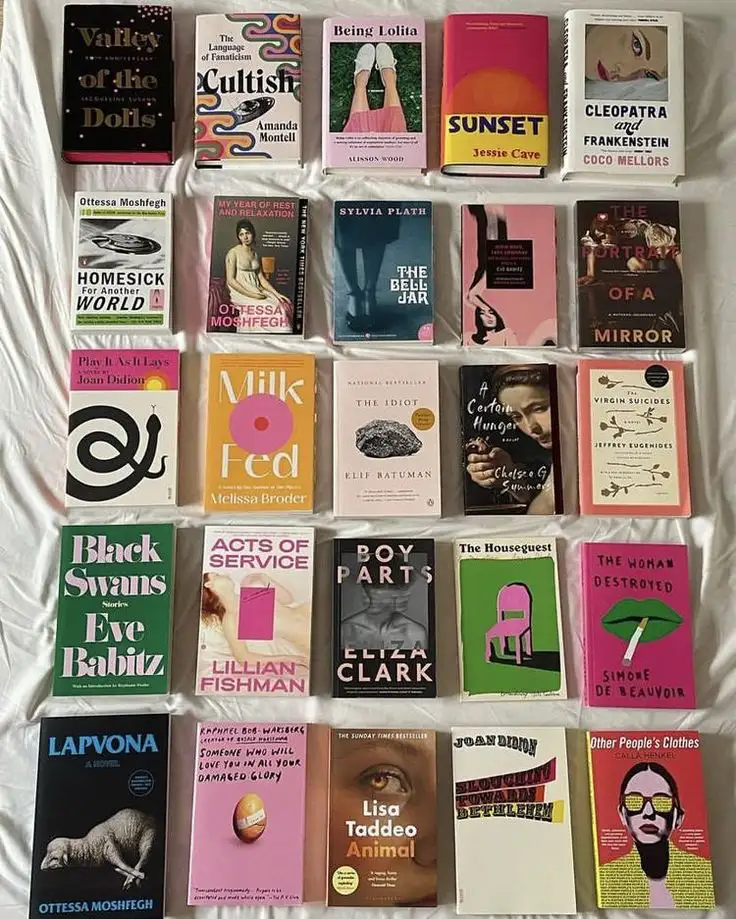
Renowned Authors and Works
When we dive into what is contemporary literature , we’re often met with an abundance of vibrant narratives and profound voices that have left indelible marks on our cultural landscape.
Influential Writers
- Gabriel García Márquez : A titan of Latin American literature, his magical realism has influenced countless authors
- Laura Restrepo : Known for her emotive portrayals of life in Colombia, Restrepo’s narratives are rich tapestries of social and political commentary
- Octavio Paz : The Nobel Prize-winning poet and essayist has deeply influenced both Mexican and international literary circles
Seminal Publications
- The Kite Runner by Khaled Hosseini : An Afghan-American’s poignant novel that unveils the complexities of betrayal and redemption
- The Brief Wondrous Life of Oscar Wao by Junot Díaz : A tale that weaves the American experience with Dominican history
- The Underground Railroad by Colson Whitehead : A powerful reimagining of the historical escape route for slaves in the American South
These authors and their works are cornerstones, providing us insight into the human condition and the societies in which they are set. Through their stories, we travel from Afghanistan’s war-torn streets to Colombia’s vibrant neighborhoods, from poetic reflections of life in Africa to the imagined historical paths of the Underground Railroad.
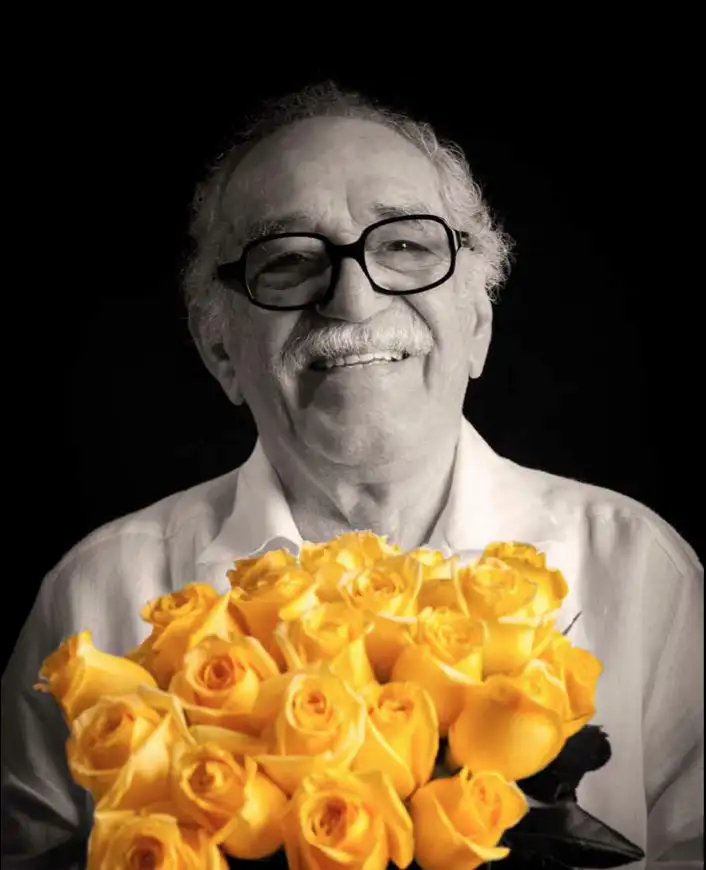
Pinterest ~ Gabriel García Márquez
Cultural and Social Themes
When we explore what is contemporary literature , we uncover a tapestry woven with rich threads of cultural and social themes. It’s here, in this vibrant literary landscape, where voices and narratives come alive, addressing crucial aspects such as race, gender, class, and environmental issues, all filtered through the lens of contemporary life and technology.
Exploring Identity
In our journey through contemporary literature, we often encounter characters grappling with their identity. It’s a reflection of our society’s ongoing dialogue about race and gender , where writers boldly navigate the intersecting pathways of self-discovery and social constructs. Such narratives not only mirror our own quests for understanding but also shape the psychology of our communities.
- Race: Stories that challenge racial stereotypes and encourage diverse representation
- Gender: Works that defy traditional gender roles and promote gender equality
Environmental Concerns
Our responsibility towards the environment is a critical issue that contemporary literature doesn’t shy away from. We see authors urgently voicing the anxieties surrounding climate change and environmental degradation, compelling us to reflect on our own impact on the planet.
- Climate Change: Characters and settings affected by the stark realities of a warming planet
- Sustainability: Plots centered around ecological conservation and the consequences of human actions
Through these themes, contemporary literature becomes a mirror, revealing the complexities and challenges that define our era.

Pinterest ~ Khaled Hosseini
Narrative Techniques and Experimentation
When we consider what is contemporary literature , we’re often grappling with works that push the boundaries of storytelling.
Narrative Innovation
In recent literary trends, realism has taken on new dimensions, with writers infusing their work with elements of magical realism to transport readers beyond the ordinary. Modernist literature , for example, laid the foundation for breaking conventional narrative structures, engaging readers with disjointed timelines and multiple perspectives . Today’s authors build on this legacy, introducing stream-of-consciousness and unreliable narrators that challenge our perception of reality.
- Stream of Consciousness : A non-linear narrative reflecting a character’s inner thoughts
- Unreliable Narrator : A character whose storytelling credibility is compromised
Crossing Boundaries
The blurring of reality and fiction is a hallmark of contemporary literature, ushering us into a space where the extraordinary melds seamlessly with the mundane. From the rich landscapes of Gabriel García Márquez’s novels to the intricate worlds of Haruki Murakami, magical realism serves not just as an aesthetic, but as an instrument to question and reshape the fabric of reality.
- Magical Realism : Incorporates magic into real settings, creating a layer of the fantastic
- Metafiction : Literary works that self-consciously address the devices of fiction, blurring truth and imagination
By embracing these methods, we find ourselves in a narrative playground that continually redefines what is contemporary literature .

Pinterest ~ Junot Díaz
Evolving Literary Forms
When we explore what is contemporary literature , we’re delving into an evolving landscape where literary forms continue to expand and transform. The boundaries that once defined genres and structures are being reshaped, offering new ways for us to experience storytelling.
Non-traditional Structures
In the realm of essays and novels , especially within genres like fantasy , romance , and mystery , we’re witnessing a shift towards non-traditional structures. Narratives no longer follow a strictly linear path and instead may present stories in fragments or from multiple perspectives. Bold experimentation with form allows authors to reflect the complexity of modern life, and readers are challenged to piece together the puzzle.
- Fragmented narratives: presenting the story out of chronological order
- Multiple perspectives: using various characters’ viewpoints for a holistic view
- Metafiction: stories that self-reflectively address their own artificiality
Digital and Interactive Literature
The rise of digital platforms has given birth to interactive literature , where the reader becomes an active participant. This could mean choosing the direction of a story in an ebook or experiencing a narrative through a video game.
- Choose-your-own-adventure ebooks: readers make decisions that influence the outcome
- Literary video games: combining gameplay with narrative elements for immersion
Contemporary literature’s ongoing evolution is a testament to the limitlessness of human creativity, ensuring every journey through the written word is as unique as the minds that wander its paths.
Challenges and Future Directions
In exploring what is contemporary literature , we must consider the dynamic landscape it inhabits. Our literature reflects and shapes our moral compass while grappling with the complexities of a changing world. It’s a conduit through which we explore the burgeoning ethical dilemmas and confront the stark realities of our environment.
Ethical Questions
Contemporary literature often examines the fabric of our ethics, probing deep into issues that define our humanity. It raises questions about our responsibility toward one another in an increasingly alienated world. Take, for instance, the representation of dystopia in current narratives, which serves not merely as entertainment but as a mirror to our potential moral failings and a warning of what might befall us if we lose our ethical way.
- Moral Complexity: Characters are no longer just heroes or villains; they are humans with complex moral landscapes that challenge the reader’s own values
- Choice and Consequence: Stories delve into the ambiguity of choices, revealing the consequences that stretch beyond the page and into our own lives
Literature in the Climate Crisis
The role of literature in addressing the climate crisis is paramount. It is a vehicle for fostering understanding and stirring us to action. By imagining worlds ravaged by environmental disasters, contemporary works compel us to confront the imminent dangers and to consider the legacy we wish to leave for future generations.
- Environmental Advocacy: Works that incorporate themes of climate change to draw attention to the urgency of the crisis
- Vision of The Future: Futuristic scenarios that serve to both warn and guide us towards a more sustainable path, avoiding an ecological dystopia
Our Tips For Contemporary Literature
Here are my Top Picks when it comes to Contemporary literature:
- Keep it Diverse : Just as our world is a beautiful mosaic of cultures, contemporary literature thrives on variety. You’ll find this in Haruki Murakami’s “Kafka on the Shore”, a mesmerizing tale that fuses reality with the mystical
- Explore Complex Characters : Seek stories with characters that challenge you, like Margaret Atwood’s “The Handmaid’s Tale”, which plunges into themes of power and identity through its rich character development
- Embrace New Genres : Don’t be afraid to step outside your comfort zone. Try a suspense-filled journey with Stephen King’s “The Shining”, where psychological horror is penned with a master’s touch
- Trace the Evolution : It’s intriguing to see how authors evolve. Observe the growth from J.K. Rowling’s Harry Potter series to her adult fiction work—a journey from magical adolescence to complex adulthood.
Remember, contemporary literature is a reflection of the times. It’s about keeping your finger on the pulse of society while immersing yourself in different perspectives.
What is the meaning of contemporary literature?
Contemporary literature refers to written works produced after World War II, reflecting modern-day themes and current history.
What makes contemporary literature differ from other literature?
Contemporary literature often breaks with tradition, experiments with new styles, and incorporates elements from everyday life, such as cinema, to reflect current issues and realities.
What is meant by contemporary world literature?
Contemporary world literature encompasses modern works from various cultures and languages, reflecting diverse perspectives and experiences from 1900 to the present, including modernism, postmodernism, and magical realism.
What are the main characteristics of contemporary literature?
Contemporary literature often features diverse perspectives, fragmented narratives, and explores current issues with a focus on individualism and realism.
If this blog post on “ What is Contemporary Literature ” resonated with you, we’d love to hear your thoughts. Feel free to share your experience in the comment section below.
If you want to keep reading more from us, have a look at these articles .
- 8 Most Important Italian Contemporary Artists (#5 Is Insane)
- Outdoor Contemporary Furniture: A Modern Backyard in 2024
- Modern Contemporary Ranch Style House Most Beautiful in 2024

Carlo Hummel
Greetings, I'm Carlo!
At the youthful age of 21, I've found my purpose in shedding light on the latest trends, innovative interior designs, influential artistic creations, and notable events within the dynamic landscape of contemporary culture. My passion for these aspects of life drives me to share my unique perspective with others, fostering a deeper connection to the ever-evolving world of culture and creativity. Modernity Rules!
Leave a Reply Cancel Reply
Your email address will not be published. Required fields are marked *
Add Comment *
Save my name, email, and website in this browser for the next time I comment.
Post Comment
Related Posts

10 Best Contemporary Books: 2024’s Must-Read Modern Gems
- 7 April 2024
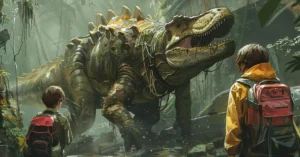
The 10 Best Modern Adventure Novels to Read in 2024
- 6 April 2024

Modern Wood Fence Designs: Experts Say Will Be Huge in 2024
- 5 April 2024

What is Modern Fit Pants 2024: Contemporary Style & Comfort
- 4 April 2024
Available on Project MUSE and JSTOR
Back issues.
Some back issues of Contemporary Literature are available online as part of a paid subscription. Anyone may view TOC's, abstracts, and a sample issue for free at cl.uwpress.org . Access may also be purchased on a limited term basis for a specific article or issue.
Print back issues may be purchased from the University of Wisconsin Press here .
Single articles may be purchased online at cl.uwpress.org or through the JSTOR archive . Print copies of single articles may be ordered here .

What Is Contemporary Fiction? A Comprehensive Guide for Readers
I used to think I hated contemporary fiction. I liked fantasy; I liked Jane Austen. I did not like “women’s fiction.”
Looking back, it’s because I didn’t really understand what contemporary fiction is. It’s kind of a confusing genre, encompassing vast swathes of books. Nowadays, I’m as big a fan of contemporary fiction as I am in almost every other genre.
Let's start with the basics. What is contemporary fiction, you ask? Simply put, it's fiction that is set in the present day. It's a literary genre that explores current and modern-day themes and issues.
Contemporary fiction can encompass a range of sub-genres, including romance, mystery, science fiction, and more. But what sets it apart from other genres? Let’s find out.
What Sets Contemporary Fiction Apart From Other Genres?
Sometimes it’s helpful to define a genre by comparing it to what it isn’t. Let’s start with some almost-overlapping genres.
Literary fiction: While contemporary fiction can fall under the umbrella of literary fiction, it is not necessarily the same. Literary fiction can be more focused on language and style, whereas contemporary fiction tends to focus more on plot and character development.
Realistic fiction: Some people say these are the same thing, but in my mind there is a distinction. Contemporary fiction can be considered a sub-genre of realistic fiction. But the key difference is the time period. Realistic fiction can happen in the past, while contemporary fiction is more of a modern-day vibe.
Sub-genres: What about other literary sub-genres like mystery or romance? Well, contemporary fiction can overlap with these genres as well. Many contemporary fiction books incorporate elements of mystery and romance into their stories, creating a unique blend of genres.
What truly sets contemporary fiction apart?
It's the focus on the here and now. Contemporary fiction is always set in the present time, dealing with current events, societal issues, and modern technology. It's the genre that captures the essence of the current zeitgeist.
So, there you have it. Now you know what sets contemporary fiction apart from other genres. But don't just take my word for it, read some contemporary fiction for yourself and experience the genre firsthand!
The Evolution of Contemporary Fiction Thanks to More Underrepresented Voices
Contemporary fiction is a constantly evolving genre that reflects the changes in our world. As “contemporary” changes, so too does the genre.
In recent years, there has been a growing emphasis on diversity in contemporary fiction, which is fantastic. Finally, we are moving away from white, straight contemporary fiction.
Authors from marginalized communities have been given a bigger platform to tell their stories, and themes of race, gender, and sexuality have become more prevalent. This has led to a more diverse and inclusive range of voices in contemporary literature, and a greater representation of the world we live in. And it’s a pleasure and delight to read them.
Who Writes Contemporary Fiction?
Contemporary fiction is a vast and diverse genre, with a wide range of authors contributing to its many sub-genres. Let's take a closer look at some of the most popular sub-genres of contemporary fiction and who writes them.
Women's Fiction
It’s a little derogatory; nobody calls Michael Crighton a “men’s fiction” writer. But there’s no better term out there yet, so I’ll use it.
Women's fiction is a sub-genre of contemporary fiction that generally focuses on the experiences of women. Popular authors in this genre include Kristin Hannah , Jodi Picoult , and Liane Moriarty . These authors often tackle themes such as family relationships, love, and womanhood.
Crime Fiction
Crime fiction is another popular sub-genre of contemporary fiction. Authors such as James Patterson , Michael Connelly , and Lee Child are well-known for their crime novels, which often feature detectives, police officers, and other law enforcement figures trying to solve mysteries and catch criminals.
Science Fiction
Science fiction is a genre that explores imaginative and futuristic concepts, often involving advanced science and technology. Popular contemporary science fiction authors include Andy Weir , Margaret Atwood , and Neal Stephenson .
Sci-fi is a weird one, but I think you can successfully classify it into contemporary fiction. Andy Weir’s novels are possibly the best example; he does so much research and uses his physics background to make sure they’re feasible. They haven’t happened yet, but they’re definitely fiction and arguably contemporary.
Other Sub-Genres of Contemporary Fiction
Other sub-genres of contemporary fiction include romance, young adult fiction, and literary fiction. Some well-known authors in these genres include Nicholas Sparks , John Green , and Donna Tartt .
As you can see, there is no shortage of talented authors contributing to the world of contemporary fiction. Whether you prefer science fiction or women's fiction, there is sure to be an author out there who speaks to your interests and passions.
Why Read Contemporary Fiction?
There are as many reasons to read contemporary fiction as there are readers. I read it it both to escape, but also to highlight reflections from my real life.
For example, I’m a queer woman, but I’ve married a man (and I love him and our life together!). I love to read queer contemporary romances to explore a facet of my personality that I wouldn’t want to in real life.
Let's face it, we all need to escape reality sometimes, and there's no better way to do so than by diving into a good book. But why choose contemporary fiction over other genres? Here are a few reasons:
It's relevant: Contemporary fiction deals with current issues and topics that are important to our world today. Reading contemporary fiction can help us better understand these issues and encourage us to think critically about them.
It's relatable: Contemporary fiction often explores the human experience, and we can see ourselves and our struggles reflected in the characters we read about. This can be both comforting and eye-opening.
It's diverse: With a wide range of authors and sub-genres, contemporary fiction offers something for everyone. Whether you're interested in romance, mystery, science fiction, or something else entirely, you're sure to find a book that suits your taste.
It expands your worldview: By reading contemporary fiction from a variety of authors, from James Patterson to Casey McQuiston, we can gain new perspectives and broaden our understanding of the world around us. We can learn about different cultures, lifestyles, and experiences, and develop empathy for people who are different from us.
Whether you're looking for an escape, a new perspective, or just a good story, contemporary fiction is definitely worth checking out.
Not convinced yet? I’ll sway you with some recommended contemporary fiction titles in the next section.
How to Choose a Good Contemporary Fiction Book?
Maybe you're ready to dive into the world of contemporary fiction, but you're not sure where to start. Fear not, dear reader. I’ve got some tips to help you choose the perfect book.
1. Read reviews. Don't rely solely on a book's synopsis or cover. Check out what other readers have to say about the book. Goodreads and Amazon are great places to start for reviews. This is the review that convinced me to read Kiss Her Once For Me, a gay holiday romcom.
Pro Tip: Look for reviews by readers who have similar tastes to yours. If they loved it, chances are you will too!
2. Consider the author's reputation. Have they written other books that you enjoyed? Do they have a strong following in the literary world? A well-respected author can be a good indicator of a quality book.
But don't be afraid to branch out and try new authors. Some of the best books come from debut authors or writers who are lesser known.
3. Trust your personal preferences. Do you prefer fast-paced thrillers or slow-burning dramas? Are you drawn to books with diverse characters or stories that explore universal themes? Keep these factors in mind when selecting a book.
Remember, choosing a book is a subjective process. What may be a favorite of one reader, may not resonate with another. Take the time to find what works for you and enjoy the journey.
Popular Contemporary Fiction Titles
Ready to dive into some contemporary fiction? Check out these popular and critically acclaimed titles:
Here’s where you can buy them.*
Eleanor Oliphant Is Completely Fine
Normal People
Such a Fun Age *These are affiliate links, which mean I earn a small commission if you end up buying these books at no cost to you!
These books cover a range of themes and genres within contemporary fiction, from family drama to social commentary to realistic fiction with a hint of romance. No matter what kind of story you're looking for, you're sure to find something compelling on this list.
Where to Find Contemporary Fiction
So, you're interested in reading some contemporary fiction, but you have no idea where to find it. Don't despair, dear reader, for we have some suggestions that will have you knee-deep in pages in no time!
Let's start with the obvious – bookstores. Whether you prefer large chains or quaint independent shops, bookstores are always a great place to start your search for contemporary fiction.
Not only can you browse through a vast selection of books, but you can also get recommendations from knowledgeable staff who are often book lovers themselves. Plus, you get to support local businesses and keep the magic of physical books alive.
Online Retailers
If you prefer shopping from the comfort of your own home, then online retailers such as Bookshop.org is a great ethical alternative to Amazon for finding contemporary fiction. Not only do they have a massive selection of books, but they also offer features such as reviews and recommendations to help you make informed decisions. Plus, Bookshop helps support small, indie bookstores. They’ve donated over $26 million so far!
Don't underestimate the power of your local library when it comes to finding contemporary fiction. Libraries not only have current bestsellers but also often have lesser-known titles that you may not find at a bookstore or online. Plus, borrowing books from the library is a great way to save money while still satisfying your reading cravings. Just make sure to return them on time, or you'll be facing some hefty late fees.
Whichever option you choose, we hope you find the contemporary fiction book of your dreams (or nightmares, if you're into that sort of thing).
Frequently Asked Questions About Contemporary Fiction
Still have some burning questions about contemporation fiction? Let me hit you with some FAQs about this fascinating genre.
Is contemporary fiction the same as literary fiction?
This is an opinion. In my mind, no, they’re not the same although the two genres can overlap. Contemporary fiction is a broad term that encompasses any fictional work set in modern times, while literary fiction is typically more focused on exploring complex themes and characters.
I would argue, for example, that Jane Eyre is literary fiction and not contemporary fiction, though it may have been contemporary when it was published in the late 1800s.
Can contemporary fiction be realistic or does it have to be based on fantasy?
Contemporary fiction can be both realistic and speculative. The genre is defined by its modern setting, rather than any specific themes or subject matter. Take MArgaret Atwood, for instance. The woman knows how to speculate. But it’s still contemporary, because it could happen today.
What is the difference between contemporary fiction and other genres like crime or romance?
The main difference is that contemporary fiction encompasses any fictional work set in modern times, while crime or romance are specific sub-genres that have their own distinct characteristics and tropes. But I believe many sub-genres happily fall into the contemporary fiction main genre. Like Kiss Her Once For Me — it’s 100% a romance novel, but it’s also contemporary fiction.
Is contemporary fiction only written by certain authors or can anyone write it?
Anyone can write contemporary fiction ! And there are many exciting new voices emerging in the genre all the time. I encourage you to try new authors! It’s a thrilling time to be a contemporary fiction fan because there are so many new voices and ideas being platformed at the moment.
However, some authors have become associated with specific sub-genres, such as women's fiction or science fiction.
Why should I read contemporary fiction when there are so many classic/fantasy/non-fiction books to choose from?
Reading contemporary fiction can help you stay up-to-date with current cultural trends and spark your imagination with fresh, innovative ideas. Plus, who doesn't love discovering a new favorite author before they become a household name?
How do I know if a contemporary fiction book is worth reading?
Check out reviews from reputable sources, look up the author's previous work, and trust your gut. If a book sounds interesting to you, give it a try! You never know what exciting new worlds you might discover.
Final Thoughts on What Contemporary Fiction Really Is
In short, it’s fiction that could happen int he present day. No magic, no non-fiction, no historical past.
It’s one of my favorite genres thanks to its breadth and depth. I think today’s contemporary fiction scene is the richest yet, and I can’t wait to see what new authors emerge.
Hopefully these answers have helped demystify contemporary fiction for you. Now, go forth and explore all the amazing stories this genre has to offer!
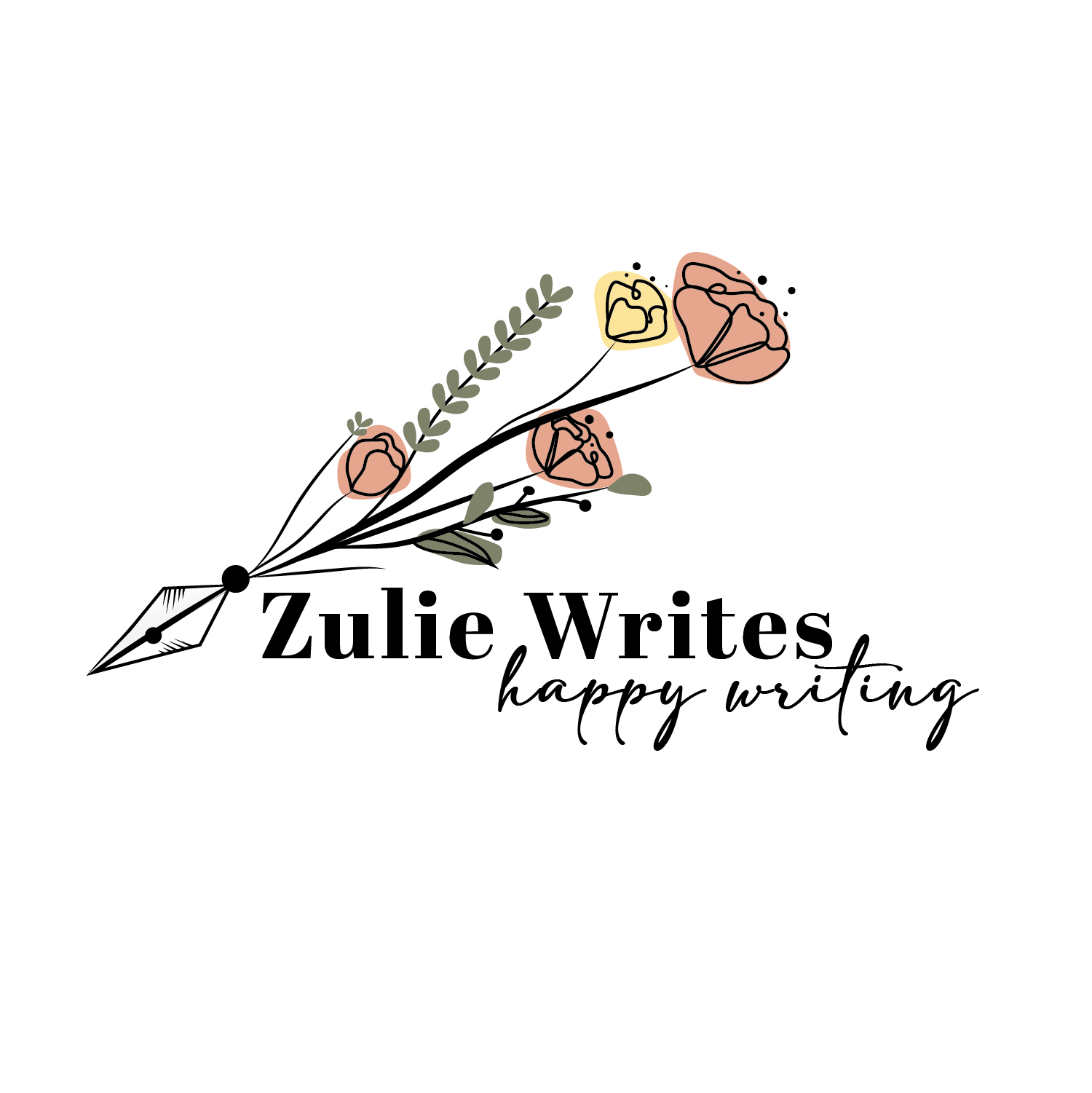
Who is Zulie Writes Staff ?
4 Hidden Gems Where I Got Paid Online Writing Jobs
How to become a notary and earn money in your free time.
- Call For Papers
- Advanced search

Advanced Search
Current Issue

About Contemporary Literature
Contemporary Literature publishes scholarly essays on contemporary writing in English, interviews with established and emerging authors, and reviews of recent critical books in the field. The journal welcomes articles on multiple genres, including poetry, the novel, drama, creative nonfiction, new media and digital literature, and graphic narrative. Contemporary Literature published the first articles on Thomas Pynchon and Susan Howe and the first interviews with Margaret Drabble and Don DeLillo; it also helped to introduce Kazuo Ishiguro, Eavan Boland, and J. M. Coetzee to American readers. As a forum for discussing issues animating the range of contemporary literary studies, Contemporary Literature features the full diversity of critical practices. The editors seek articles that frame their analysis of texts within larger literary historical, theoretical, or cultural debates.
Latest Articles
- Find this author on Google Scholar
- Find this author on PubMed
- Search for this author on this site
- You have access Restricted access Contributors Contemporary Literature, March 2024, 64 (1) 123; DOI: https://doi.org/10.3368/cl.64.1.123
Contemporary Literature FREE Sample Issue

- What is Contemporary Literature? Trends in Contemporary Literature
- Self Publishing Guide

What is contemporary literature?
The written word that is now in use is referred to as contemporary literature. It perfectly encapsulates today’s spirit, complete with all of its complexities, contradictions, and uncertainties. It covers a wide range of genres, including anything from novels to poetry, short stories to essays.
Contemporary literature reflects the concerns and issues that are relevant to contemporary society. It explores themes such as identity, race, gender, class, politics, and technology. It often challenges conventional norms and values, pushing the boundaries of what is acceptable and what is not. It invites readers to question their assumptions and biases, and to confront the uncomfortable truths of our world
Contemporary literature is not only a reflection of our times, but it also shapes our understanding of them. It helps us make sense of the complexities of our world, and to see it in new and different ways. It provides us with a window into other people’s lives, cultures, and experiences, fostering empathy and understanding.
In short, contemporary literature is a vital part of our cultural landscape. It helps us understand ourselves and the world we live in, and it invites us to imagine new possibilities for the future.
Types of contemporary literature
Contemporary literature is a broad term that encompasses various genres and styles of writing. Here are some of the types of contemporary literature:
- Literary Fiction : This type of contemporary literature focuses on character development and exploring complex themes and issues.
- Young Adult (YA) Fiction : YA literature is targeted towards teenagers and explores themes that are relevant to their age group, such as identity, relationships, and coming of age.
- Science Fiction and Fantasy : This type of contemporary literature is set in imaginary worlds or alternate realities and often deals with futuristic technology, magic, or supernatural beings.
- Romance: Romance novels are focused on love and relationships and often have happy endings.
- Mystery and Thriller: These types of contemporary literature typically involve a crime or mystery that the protagonist must solve, often with high stakes and suspenseful plot twists.
- Memoirs and Autobiographies: These types of contemporary literature are based on the author’s personal experiences and reflect on their life story and perspective.
- Poetry: Contemporary poetry covers a wide range of themes and styles, from free verse to traditional forms, and often explores emotions and human experience in a concise and evocative way.
- Graphic Novels and Comics: These types of contemporary literature use a combination of words and illustrations to tell a story, often tackling complex themes and social issues in a visually engaging way.
Famous authors of contemporary literature
- J.K. Rowling’s Harry Potter series
- Stephen King – The Shining, IT, The Stand
- Margaret Atwood – The Handmaid’s Tale, Alias Grace
Without Hesitation by S K Sharma
- Haruki Murakami – Norwegian Wood, Kafka on the Shore
J.K. Rowling's Harry Potter series
J.K. Rowling’s Harry Potter series is considered contemporary literature due to its relevance to modern times and its popularity among modern readers. The series has become a cultural phenomenon and has gained a massive following among people of all ages, making it a significant part of contemporary pop culture.
One of the reasons the series has become so popular is its relatable themes and characters, which resonate with readers of all ages. The series explores complex themes like identity, friendship, love, loss, and the battle between good and evil, which are still relevant today.
Moreover, the series is an example of how contemporary literature can tackle social issues, such as discrimination and prejudice, in a compelling and engaging way. Through the portrayal of the struggles of characters like Hermione, who faces discrimination due to her Muggle-born status, and Hagrid, who is stigmatised for being half-giant, the series highlights the importance of acceptance and inclusivity.
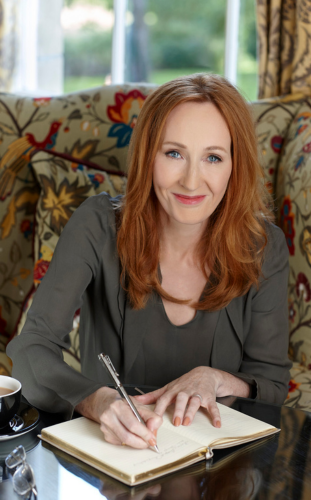
J.K. Rowling's Harry Potter series, Famous Author of Contemporary Literature.
Stephen King - The Shining, IT, The Stand
Stephen King is a prominent author of contemporary literature, and his works, such as “The Shining,” “IT,” and “The Stand,” have achieved cult status among modern readers. King’s writing is characterised by his unique ability to merge elements of horror, suspense, and the supernatural into a captivating narrative.
One of the factors that make Stephen King’s works contemporary literature is his style of storytelling, which incorporates modern themes and issues that resonate with contemporary readers. His novels often explore complex human emotions and psychology, as well as societal issues such as the impact of technology and the dangers of political extremism.
Moreover, King’s works are characterised by their rich character development and immersive world-building, which transport readers into a world that is both familiar and unsettling. His stories are not only entertaining but also thought-provoking, making them relevant to modern readers seeking meaningful experiences in literature.
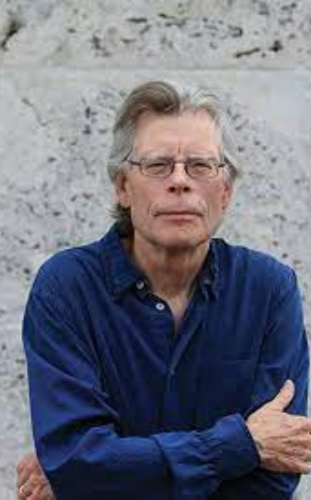
Stephen King - The Shining, IT, The Stand, Famous Author of Contemporary Literature.

Margaret Atwood - The Handmaid's Tale, Alias Grace
Margaret Atwood’s novels, including “The Handmaid’s Tale” and “Alias Grace,” are considered contemporary literature due to their relevance to modern society and the issues they address. Atwood’s works often explore themes such as gender, politics, power dynamics, and the impact of technology on society.
For example, “The Handmaid’s Tale” is a dystopian novel that examines the oppression of women in a patriarchal society. Atwood portrays a world where women are stripped of their rights and forced into roles as child bearers and servants for men. The novel highlights the dangers of authoritarianism and the importance of individual freedom.
Similarly, “Alias Grace” delves into the issues of gender and power in a historical context, exploring the life of a woman accused of murder in 19th century Canada. Atwood’s novel sheds light on the social constraints and limitations faced by women in the past and how they struggled to assert themselves in a male-dominated society.
Margaret Atwood’s contemporary literature provides a thought-provoking exploration of the human experience and its complexities, making it relevant to modern readers seeking to understand and confront the challenges of our time.

Margaret Atwood - The Handmaid's Tale, Alias Grace, Famous Author of Contemporary Literature.
A plethora of issues in Bharatvarsha (India) necessitate precise answers in the middle of a complex setting. The quest of truth and service to society, on the other hand, is hampered by visible and unseen individuals who influence power dynamics. Biases and self-interest impede growth even more.
These problems are created not by a chosen few, but by a plethora of individuals who influence the destiny of the nation. Politicians, bureaucrats, and corporate entities wield considerable power, while unseen individuals operate behind the scenes, concealing their motivations in secrecy. To uncover these self-interests, an unbiased method free of preconceived preconceptions is required.
Creating solutions necessitates surgical precision, as well as an understanding of the interplay of power, society, and individual motives. It is critical to expose the deceptive techniques hidden behind the mask of nationalism. Transparency, accountability, and a well-informed citizenry are essential.
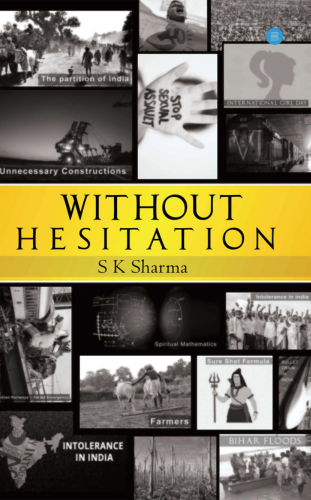
Without Hesitation by S K Sharma, Famous Author of Contemporary Literature.
Haruki Murakami - Norwegian Wood, Kafka on the Shore
Haruki Murakami is a Japanese author whose works have gained global recognition as contemporary literature. What makes his novels stand out is the way he blends elements of the surreal with everyday experiences. His writing style is unique and introspective, often exploring themes of alienation, love, and loss.
In “Norwegian Wood,” Murakami explores the struggles of young adulthood and the challenges of finding oneself in a changing world. The story follows Toru Watanabe as he navigates the complexities of relationships, loss, and self-discovery. Murakami’s writing is introspective and thoughtful, delving into the psyche of his characters and their emotional landscapes.
In “Kafka on the Shore,” Murakami takes readers on a surreal journey through the minds of his characters. The story follows the adventures of Kafka Tamura, a teenage boy on a quest to uncover the truth about his past, and Nakata, an elderly man with an unusual gift for talking to cats. The novel explores themes of identity, fate, and the nature of reality, and Murakami’s vivid imagination and skillful storytelling create a world that is both fascinating and thought-provoking.

Haruki Murakami - Norwegian Wood, Kafka on the Shore , Famous Author of Contemporary Literature.
What is modern literature?
Modern literature refers to literary works that were produced during the late 19th and early 20th century, primarily in Europe and North America. This period was characterised by significant cultural and social changes that led to new artistic movements and experimentation with literary styles and themes.
Modern literature is marked by its focus on the individual, the exploration of the inner self, and the depiction of complex psychological states. Many modern authors were interested in breaking away from traditional forms of storytelling and experimenting with different narrative techniques, such as stream of consciousness and multiple perspectives.
Moreover, modern literature reflects the changing attitudes and values of society at the time. Many authors were interested in social and political issues, such as gender and class inequality, and incorporated them into their works. This gave rise to new genres, such as the modernist novel and the social problem novel.
It is characterised by its experimental and innovative nature, its focus on the inner self and individual experiences, and its engagement with social and political issues of the time. It paved the way for contemporary literature, which continues to push boundaries and explore new forms of storytelling.
Examples of modern literature
- “The Great Gatsby” by F. Scott Fitzgerald Firstly, the novel was published in 1925, which is considered the modern era in literary history. It was a time when writers were experimenting with new narrative techniques and exploring new themes, which is evident in “The Great Gatsby.” Secondly, the novel portrays the changing social and cultural landscape of America during the early 20th century. It reflects the excesses and decadence of the Roaring Twenties, which was a time of great economic prosperity and social upheaval. Thirdly, the novel is written in a modernist style, with its fragmented narrative structure and use of symbolism and metaphor to convey its themes. Fitzgerald’s use of first-person narration by the character of Nick Carraway, who is an observer and participant in the events of the story, also reflects modernist literary techniques. Finally, “The Great Gatsby” is a timeless exploration of universal themes like love, wealth, power, and the American Dream. It speaks to readers of all generations, making it a classic of modern literature.
- “The Road” by Cormac McCarthy “The Road” by Cormac McCarthy is modern literature because of its unique narrative style, themes, and subject matter. Firstly, the novel’s narrative style is experimental and non-traditional, with sparse punctuation and fragmented sentences. This technique emphasises the bleak and barren nature of the post-apocalyptic world that the characters inhabit. The style is also reflective of the characters’ emotional states, as they struggle to survive in a world that has been destroyed. Secondly, the novel tackles themes that are relevant to modern society, such as survival, love, and morality. The post-apocalyptic world depicted in the novel forces the characters to confront these themes in a raw and unfiltered way. The novel also explores the relationship between a father and son, and how it is tested in the face of extreme adversity. Lastly, the subject matter of the novel is both disturbing and thought-provoking. The novel explores the consequences of a catastrophic event and the lengths that people will go to survive. The bleak and barren landscape of the novel is a warning of what could happen if we continue down a path of destruction and disregard for the environment.
- “Invisible Man” by Ralph Ellison “Invisible Man” by Ralph Ellison is a modern literature novel for several reasons. First, it was published in 1952, which falls within the time period of modern literature. Second, the novel deals with issues that were particularly relevant during the modernist period, such as race relations and the concept of individual identity. The novel tells the story of an unnamed African-American man who feels invisible to society due to his race. He experiences a number of challenges as he tries to navigate a society that is hostile towards him, including being expelled from college and being subjected to racist treatment by white people. Through the protagonist’s experiences, the novel explores the complexities of racial identity and the struggle for self-acceptance in a society that devalues blackness. Furthermore, the novel’s style and structure are also characteristic of modern literature. The novel is written in a nonlinear style, with a fragmented narrative that jumps between different points in time. This reflects the modernist tendency to experiment with form and structure, and to reject traditional narrative conventions.
Difference between modern and contemporary literature:
The terms “modern” and “contemporary” are often used interchangeably when discussing literature, but they actually have different meanings.
The terms “modern literature” and “contemporary literature” refer to two distinct literary genres that are frequently used interchangeably. In terms of historical period, subjects, and writing style, they differ significantly.
Literature from the late 19th to the middle of the 20th century is referred to as modern literature. This time frame encompasses the modernist movement, which was distinguished by a rejection of conventional structures and a stress on subjectivity, individualism, and literary experimentation. The social, cultural, and political developments of the day were reflected in modernist literature, which frequently examined the inner workings of the human brain.
Contemporary literature, on the other hand, refers to works of literature that are written in the present time or recent past. Contemporary literature is often characterised by a focus on current social, cultural, and political issues, as well as a diverse range of voices and perspectives. It includes a variety of genres and styles, from literary fiction to popular fiction, and often deals with issues such as globalisation, technology, identity, and diversity.
While modern literature and contemporary literature differ in terms of time period and themes, they also have different writing styles. Modern literature is often characterised by a more formal and experimental writing style, with a focus on techniques such as stream-of-consciousness narration and fragmentation of plot and character. In contrast, contemporary literature tends to be more accessible and relatable, with a focus on character development and storytelling.
Trends in Literature
Contemporary literature is a dynamic and constantly evolving field, with new trends and themes emerging all the time. Here are a few current trends in contemporary literature:
- Realism : A literary trend that emerged in the 19th century, realism focused on depicting everyday life and experiences in a realistic and honest way. Realist authors often used detailed descriptions and dialogue to create a sense of authenticity in their works.
- Modernism : A literary trend that emerged in the early 20th century, modernism was characterised by experimentation with form and style. Modernist writers often used stream-of-consciousness narration, fragmentation, and other innovative techniques to convey the subjective experience of their characters.
- Postmodernism : A literary trend that emerged in the mid-20th century, postmodernism was marked by a rejection of traditional narrative structures and a focus on themes of fragmentation, deconstruction, and intertextuality. Postmodernist writers often used irony, parody, and self-referentiality to challenge the reader’s assumptions and expectations.
- Magical realism : A literary trend that emerged in Latin America in the mid-20th century, magical realism blends realistic and fantastical elements to create a dreamlike or surreal atmosphere. Magical realist writers often use magical or mythical elements to comment on real-world issues.
- Social justice literature : A contemporary literary trend that focuses on issues of social justice, equity, and human rights. Social justice literature often deals with issues such as racism, sexism, homophobia, and poverty, and may be used to raise awareness, provoke social change, or promote activism.
Trends in contemporary literature
- Diversity and Inclusion : One of the most significant trends in contemporary literature is the emphasis on diversity and inclusion. Many contemporary authors are actively working to include diverse characters and perspectives in their work, highlighting the experiences of underrepresented groups and challenging traditional literary norms. For example, Angie Thomas’ “The Hate U Give” and Tommy Orange’s “There There” are both powerful examples of contemporary literature that explore the experiences of marginalised communities.
- Environmentalism : As the world faces increasing environmental challenges, many contemporary authors are exploring the relationship between humans and the natural world. From Margaret Atwood’s “MaddAddam” trilogy to Jeff Vandermeer’s “Annihilation,” contemporary literature is filled with stories that imagine the consequences of environmental disaster and humanity’s potential for environmental stewardship.
- Magic Realism : A genre that has gained significant popularity in recent years is magic realism. This style combines elements of the fantastic with realistic depictions of everyday life, creating a surreal and dreamlike world. Examples of magic realism in contemporary literature include Gabriel Garcia Marquez’s “One Hundred Years of Solitude” and Haruki Murakami’s “The Wind-Up Bird Chronicle.”
- Social Commentary : Many contemporary authors use their work as a vehicle for social commentary, exploring the pressing issues of our time and challenging readers to consider their own roles in shaping society. For example, Colson Whitehead’s “The Underground Railroad” uses the story of a runaway slave to explore the ongoing legacy of slavery in America.
- Genre-Bending : Finally, one trend that is becoming increasingly popular in contemporary literature is genre-bending. Authors are pushing the boundaries of traditional genre categories, blending elements of different genres to create entirely new forms of storytelling. A great example of this is Marlon James’ “Black Leopard, Red Wolf,” which combines elements of African mythology with classic fantasy storytelling.
Some examples of trends in contemporary literature:
There are several trends in contemporary literature that have emerged in recent years. Some examples include:
- Diversity and representation : Contemporary literature has increasingly focused on diverse representation of characters, reflecting the diverse backgrounds and experiences of readers. This includes stories featuring characters from underrepresented communities, such as LGBTQ+ characters, characters of colour, and characters with disabilities.
- Magical realism : A genre that blends the fantastical with the mundane, magical realism has become a popular trend in contemporary literature. This style of writing often features surreal or dreamlike elements within a realistic setting, blurring the line between fantasy and reality.
- Memoirs and personal essays : Nonfiction has become increasingly popular in contemporary literature, with memoirs and personal essays often topping bestseller lists. These stories offer a glimpse into the lives and experiences of individuals, often exploring themes of identity, family, and relationships.
- Environmental themes : With the growing concern over climate change and the environment, contemporary literature has begun to address these issues. Many recent novels explore the impact of humans on the natural world, as well as the potential consequences of inaction.
- Genre blending : Contemporary literature often blurs the lines between different genres, creating unique and unconventional stories. For example, a novel might combine elements of science fiction, mystery, and romance, resulting in a story that defies categorization.
Contemporary literature is constantly evolving and adapting to reflect the changing world around us. These trends are just a few examples of the diverse and innovative stories being told in modern times.
- About The Author
- Latest Posts
Mansi Chauhan

You May Also Like

Leave a Reply Cancel reply
Your email address will not be published. Required fields are marked *
Save my name, email, and website in this browser for the next time I comment.
Authors & Events
Recommendations

- New & Noteworthy
- Bestsellers
- Popular Series
- The Must-Read Books of 2023
- Popular Books in Spanish
- Coming Soon
- Literary Fiction
- Mystery & Thriller
- Science Fiction
- Spanish Language Fiction
- Biographies & Memoirs
- Spanish Language Nonfiction
- Dark Star Trilogy
- Ramses the Damned
- Penguin Classics
- Award Winners
- The Parenting Book Guide
- Books to Read Before Bed
- Books for Middle Graders
- Trending Series
- Magic Tree House
- The Last Kids on Earth
- Planet Omar
- Beloved Characters
- The World of Eric Carle
- Llama Llama
- Junie B. Jones
- Peter Rabbit
- Board Books
- Picture Books
- Guided Reading Levels
- Middle Grade
- Activity Books
- Trending This Week
- Top Must-Read Romances
- Page-Turning Series To Start Now
- Books to Cope With Anxiety
- Short Reads
- Anti-Racist Resources
- Staff Picks
- Memoir & Fiction
- Features & Interviews
- Emma Brodie Interview
- James Ellroy Interview
- Nicola Yoon Interview
- Qian Julie Wang Interview
- Deepak Chopra Essay
- How Can I Get Published?
- For Book Clubs
- Reese's Book Club
- Oprah’s Book Club
- happy place " data-category="popular" data-location="header">Guide: Happy Place
- the last white man " data-category="popular" data-location="header">Guide: The Last White Man
- Authors & Events >
- Our Authors
- Michelle Obama
- Zadie Smith
- Emily Henry
- Amor Towles
- Colson Whitehead
- In Their Own Words
- Qian Julie Wang
- Patrick Radden Keefe
- Phoebe Robinson
- Emma Brodie
- Ta-Nehisi Coates
- Laura Hankin
- Recommendations >
- 21 Books To Help You Learn Something New
- The Books That Inspired "Saltburn"
- Insightful Therapy Books To Read This Year
- Historical Fiction With Female Protagonists
- Best Thrillers of All Time
- Manga and Graphic Novels
- happy place " data-category="recommendations" data-location="header">Start Reading Happy Place
- How to Make Reading a Habit with James Clear
- Why Reading Is Good for Your Health
- 10 Facts About Taylor Swift
- New Releases
- Memoirs Read by the Author
- Our Most Soothing Narrators
- Press Play for Inspiration
- Audiobooks You Just Can't Pause
- Listen With the Whole Family

Contemporary Voices of America: Fiction
The us is filled with distinct stories and perspectives, and below are novels by contemporary authors who focus on different aspects of american identity..

Sabrina & Corina
By kali fajardo-anstine, paperback $17.00, buy from other retailers:.
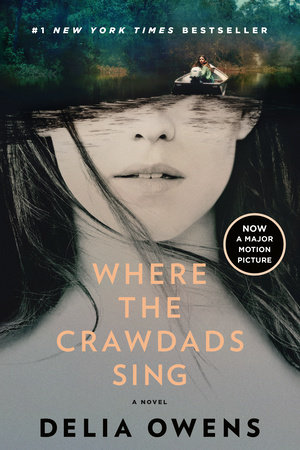
Where the Crawdads Sing (Movie Tie-In)
By delia owens, paperback $18.00.
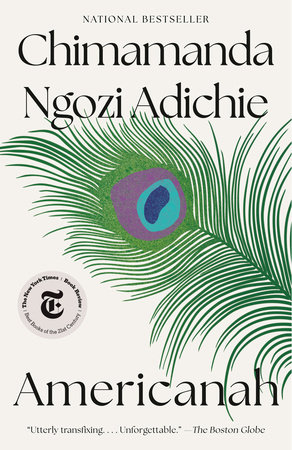
by Chimamanda Ngozi Adichie
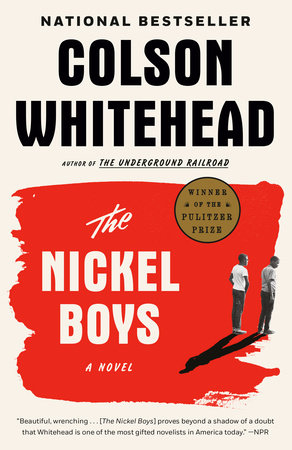
The Nickel Boys
By colson whitehead, paperback $16.00.
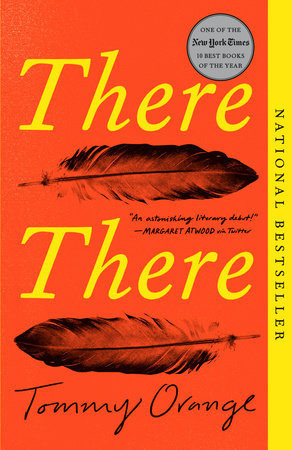
There There
By tommy orange.
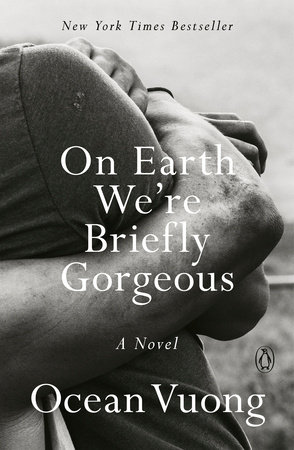
On Earth We’re Briefly Gorgeous
By ocean vuong.
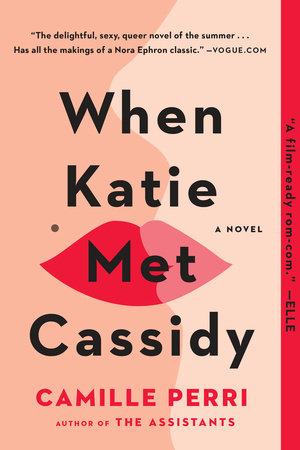
When Katie Met Cassidy
By camille perri.

by Joanne Ramos

A Place for Us
By fatima farheen mirza.
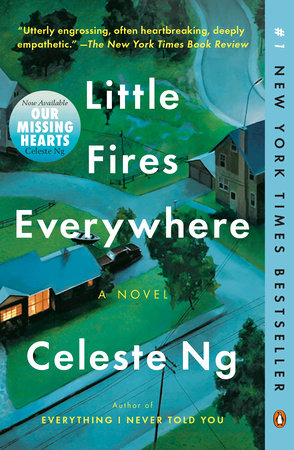
Little Fires Everywhere
By celeste ng.
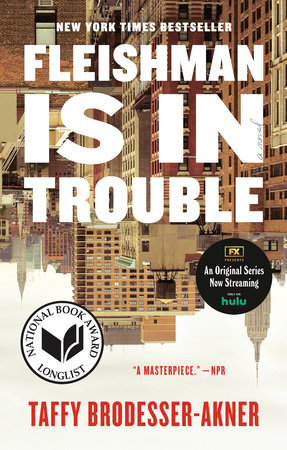
Fleishman Is in Trouble
By taffy brodesser-akner.

American Spy
By lauren wilkinson.

by Jenny Zhang
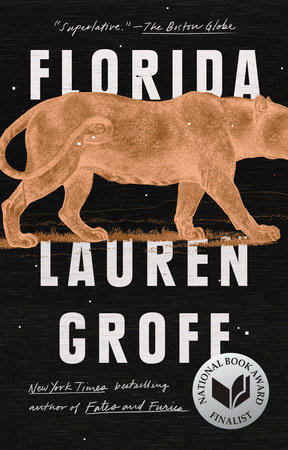
by Lauren Groff

by Yaa Gyasi
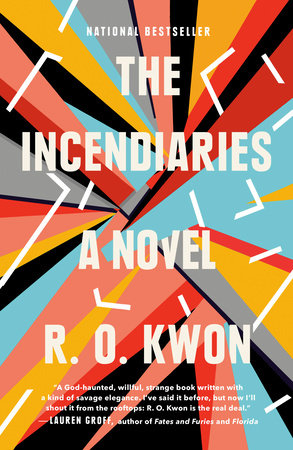
The Incendiaries
By r. o. kwon.
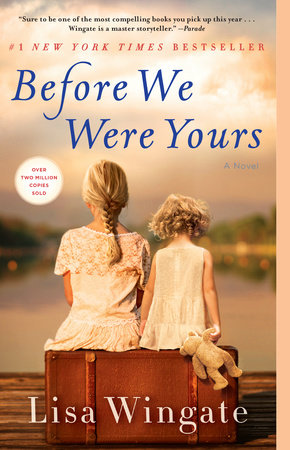
Before We Were Yours
By lisa wingate.
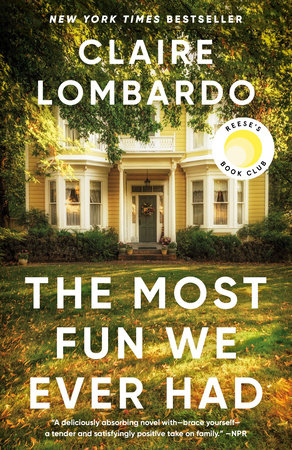
The Most Fun We Ever Had
By claire lombardo, paperback $19.00.
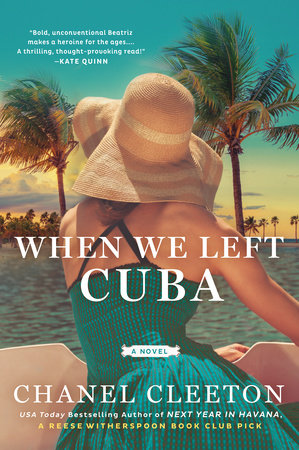
When We Left Cuba
By chanel cleeton.
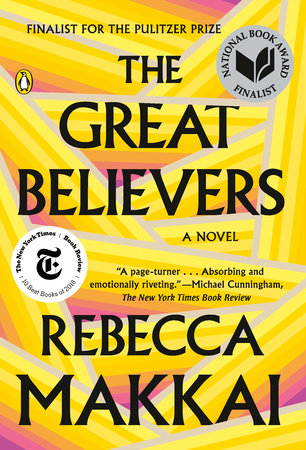
The Great Believers
By rebecca makkai.
- Share on Facebook
- Share on Tumblr
More to Explore
Visit other sites in the Penguin Random House Network
Raise kids who love to read
Today's Top Books
Want to know what people are actually reading right now?
An online magazine for today’s home cook
Just for joining you’ll get personalized recommendations on your dashboard daily and features only for members.
Contemporary Literature: What It Is, Authors, Features and Characteristics
We explain what contemporary literature is and what its characteristics are. In addition, the topics it covers, its genres and authors.
What is contemporary literature?

Characteristics of contemporary literature
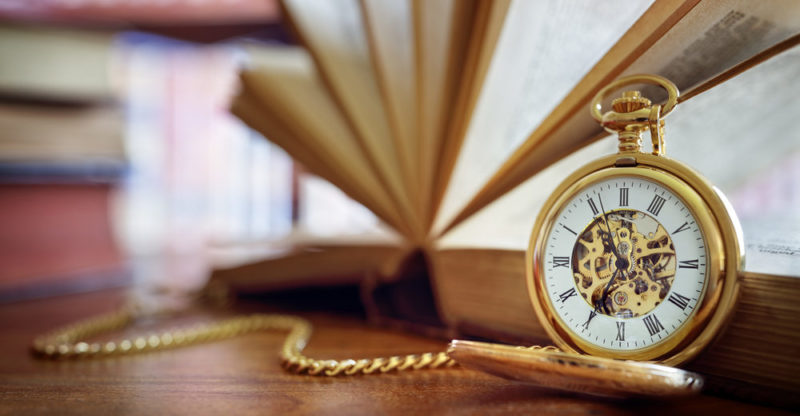
Contemporary Literature Topics

- Social inequality
- Terrorism and war
- The alienation of the human being in society
- The politics and corruption
- The environment and the lack of awareness of its care
- The ethical and moral
- The economy and social classes
- Gender inequality
Contemporary genres
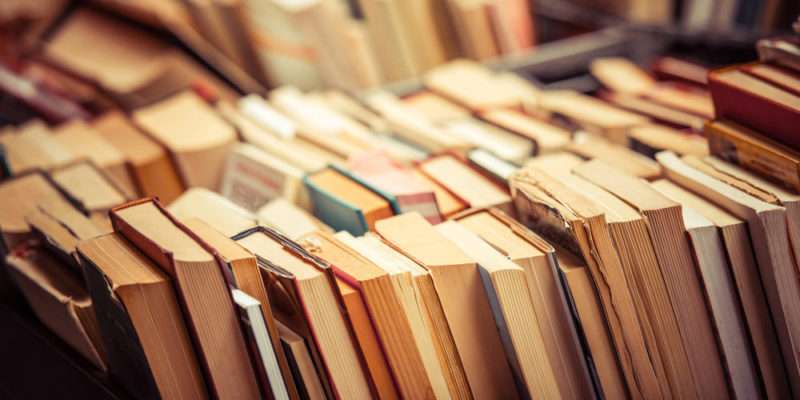
- Fiction: It is an imaginary story, although it reflects certain aspects of real life and human emotions .
- The graphic novel: It is a long story, with a complex and developed plot. It differs from a story because the reader knows both the plot and what the characters feel.
- The poetry free verse: It is a free-structured narrative rather than using verse. Certain authors even dare to write in a disorderly way.
- The popular tale or fable: It is a short story on an invented topic and with simple arguments, which leaves a teaching (or apologue).
- The comedy: It is a representation of a happy and fun aspect of human life, narrated through a conflict that ends with a happy ending.
Contemporary works and authors

- "Fictions" by Jorge Luis Borges ( Argentina )
- "Inés del alma mía" by Isabel Allende ( Chile )
- "Vision of Anáhuac" by Alfonso Reyes Ochoa ( Mexico )
- “Arráncame la vida” by Ángeles Mastretta (Mexico)
- "Where the air is clear" by Carlos Fuentes (Mexico)
- "One Hundred Years of Solitude" by Gabriel García Márquez (Colombia)
- "Island of passion" by Laura Restrepo (Colombia)
- "Fiercely Human Angel" by Blas Otero ( Spain )
- "The Pascual Duarte Family" by Camilo José Cela ( Spain )
- "The table of Flanders" by Manuel Vázquez Montalbán (Spain)
Amputee Ibi
She has pursued her studies in The United States, where she has graduated in Business and Economics and is currently finishing her Master studies in International Economics and Finance. Miss. Amputee is fluent in three languages: English, Spanish and Russian and has elementary knowledge of French and Italian. She love exploring how Collaborative Research Group can become the best tool to achieve the (necessary) educational change. .
Leave a reply
Social media, entertainment, recent post.

Sport: What Is It, Types, Risks, Features, Characteristics and Examples

Dogs: Emergence, Features, Characteristics, Feeding and Breeds

Story: Definition, Elements, Structure, Features and Characteristics

Essay: Definition, Structure, Features, Characteristics, How to Do It

Narrative Text: What It Is, Structure, Features, Characteristics and Examples
American Literature: The Contemporary Period: Home
- How to Get Help
The Contemporary Period
The Contemporary period of American literature began in 1945. This time period includes numerous award winning authors, including Maya Angelou, James Baldwin, Toni Morrison, Philip Roth, and Colson Whitehead, to name a few. This guide highlights key figures and provides links for further research.
The authors listed here are a sampling of key American writers of the time period. Additional writers can be researched using the database links provided on this guide.
Humanities Source Ultimate offers access to key content covering literary, scholarly, and creative thought. It also includes hundreds of scholarly full-text journals cited in leading subject indexes to round out student research.
Learn more about Humanities Source Ultimate using the resources below:
Search Tips
View our tip sheet and our YouTube Tutorial for information on how to locate materials in this database. View our EBSCO Research Guide to learn more about navigating EBSCO databases.
Download the EBSCO app on your Android or iOS device for mobile searching.
More Places to Search
Explore our English Research Guide , History Research Guides , or Religion Research Guide for additional resources.

JSTOR includes journal content, primary sources, images, and more across the humanities, social sciences, and sciences.
Learn more about JSTOR using the resources below:
View our tip sheet for information on how to locate materials in this database. View our JSTOR Research Guide to learn more about navigating this database.

MLA International Bibliography is a detailed bibliography of journal articles, books, and dissertations from the Modern Language Association .
Learn more about MLA International Bibliography using the resources below:
Explore our English Research Guide for additional resources.
Perspectives
Understanding Contemporary American Literary Theory
In this revised edition of Understanding Contemporary American Literary Theory, Michael P. Spikes adds Stanley Fish and Susan Bordo to the critics whose careers, key texts, and central assumptions he discusses in introducing readers to developments in American literary theory during the past thirty-five years. Underscoring the largely heterogeneous mix of strategies and suppositions that these critics, along with Paul de Man, Henry Louis Gates Jr., Edward W. Said, and Stephen Greenblatt, represent, Spikes offers concise analyses of their principal claims and illustrates how their works reflect a range of critical perspectives, from deconstruction, African American studies, and reader-response theory to political criticism, the new historicism, and feminism.
- Next: Angelou >>
- Last Updated: Aug 7, 2023 2:16 PM
- URL: https://southern.libguides.com/contemporary
The Contemporary
Our colloquium brings Stanford scholars and invited scholars together to examine the “contemporary” with a focus on three defining moments: 1945, 1989, and 2001. In recent years the concept of the contemporary has been taken up within limited disciplinary discourses and in the context of distinct geographical settings, such as the Yale-based Post•45 group, which categorizes exclusively North American writing since 1945. The horizon of this colloquium, however, is North America, Europe, and the global arena. We employ a comparative and interdisciplinary approach to the hybrid term “contemporary” as it intersects various fields and serves as a heuristic device to understand phenomena in politics, culture, and the arts. By bringing together Stanford faculty, graduate students and visitors from different departments and methodological backgrounds, we want to foster innovative approaches to examine the contemporary. In order to share ideas and debates generated in the colloquium, and to encourage broad participation within and beyond the Stanford community, we will pre-circulate papers and create an open-access online platform for ongoing discussion.
Recent scholars dealing with post-1945 society and culture (Giorgio Agamben, Paul Rabinow, Timothy Snyder, Tony Judt, Marci Shore, Amy Hungerford and Amy Elias) have pioneered various disciplinary discussions of the present. Drawing on these existing discourses in philosophy, literature, history, law, anthropology, political science and cultural studies, our work stretches beyond these disciplinary boundaries by encouraging scholars from these fields to write short papers for an interdisciplinary audience and to present, discuss, and collaborate on this fundamentally interdisciplinary topic.
Pivotal questions related to the contemporary such as the political and cultural foundations of the post-war era remain to be discussed in a comparative context and on a global scale. These dates are “key” for different countries in various ways, and their uniqueness is tied to various economic, political, social, cultural, or technological realms. For example, 1989 brought about the fall of the Berlin wall and German unification. However, this event had far reaching implications beyond the national and even the continental with significant ramifications for the Middle East, Central Asia and Africa. Beyond regional concerns, what does the fall of the Berlin wall mean in the context of current debates in political science, literary studies, or anthropology? Moreover, what cultural objects (such as literature, film, journalism, or art) or phenomena (such as legal action, social interactions, or policy-making) do various disciplines value as evidence of these events’ significance?
We anticipate that launching this project in 2013 with the format of pre-circulated scholarship and a focused colloquium will help carry this project forward in concrete ways, such as an digital platform for ongoing debate, co-taught and cross-listed course syllabi, and future conferences or colloquiums hosted at Stanford or elsewhere.
Faculty PIs
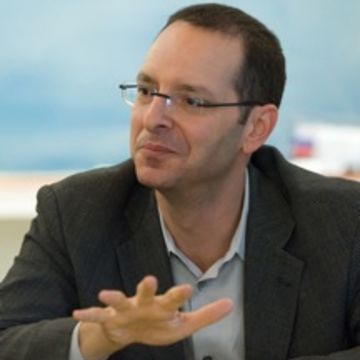
Graduate Coordinators

Ariel Horowitz
Past events.

Celebrating Natality: Toward A Philosophy of Birth
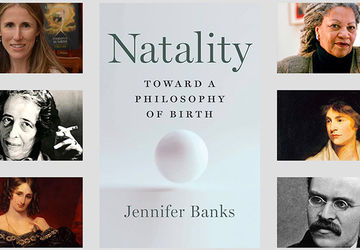
The Academic Press: A View From the Inside with Jennifer Banks
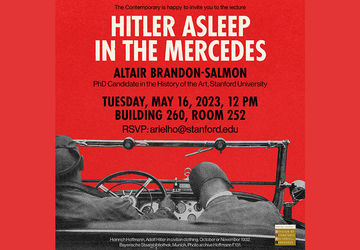
The Contemporary: Hitler Asleep in the Mercedes
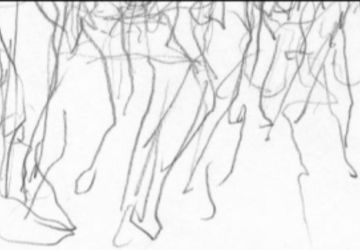
The Contemporary: Florian Klinger
What is new in contemporary art understanding the present through modern german thought, a discussion of carlo ginzburg's history, rhetoric, and proof, debating islam, and modernity in contemporary arab-islamic thought, contemporary counter-conduct, a discussion of kojin karatani's history and repetition.
![literature contemporary Hannah Arendt, Crises of the Republic [Book Discussion]](https://dlcl.stanford.edu/sites/dlcl/files/styles/hs_medium_rectangle_360x250/public/events/2920.jpg?h=0f7f0e7d&itok=HAAP61nR)
Hannah Arendt, Crises of the Republic [Book Discussion]
- International edition
- Australia edition
- Europe edition
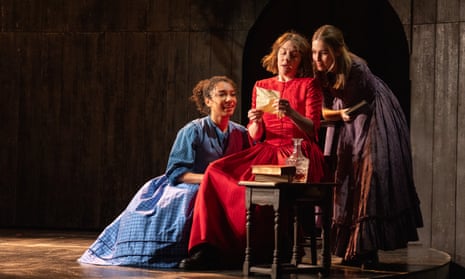
Underdog: The Other Other Brontë review – modern mashup pits deceitful sister as a ruthless rival
National Theatre, London A dislikable version of Charlotte, jockeying for prominence and yearning to be as immortal as Byron, is the surprising focus of this quick-witted drama
A s a drama about the literary canon’s most famous sisters, Underdog explores the prickly edges of competitive sisterhood, first with a passing jibe at Jane Austen (for making it on to a banknote ), then a fuller indictment by Charlotte (Gemma Whelan) who, in scarlet period dress and gen Z boots, tells us: “Young women judge older women more harshly than anybody else … They are conditioned to.”
Sarah Gordon’s play deals with writerly competition between the sisters themselves, although it is Charlotte who is most preoccupied by it. The older sister is a maternal figure to younger Anne (Rhiannon Clements) but also a ruthless rival when Anne’s literary fame risks eclipsing hers, and knifes both sisters strategically while speaking of sorority.
Directed with pace by Natalie Ibu, it is a knowing period-modern mashup, joshing in tone and taking a risk in turning Charlotte into an unlikable, albeit brutally honest, anti-heroine. In fact, this play seems to be more about Charlotte than the “other other” sister of its title. She is its central narrator, and we enter her mind over that of sweet, unassuming Anne and no-nonsense Emily (Adele James) while Branwell (James Phoon), their wayward drunken brother, barely gets a look-in beyond being drunken and wayward.
We hear how she edits Emily’s poetry after her death and prevents a reprint of Anne’s most popular novel, The Tenant of Wildfell Hall, although we also see that beneath this lies great ambition and a firebrand yearning to become as immortal as the likes of Byron.
It certainly raises issues between Charlotte and Anne, but Emily seems little more than a foil to them rather than becoming a part of the competition, despite her magnum opus in Wuthering Heights, which brought its own scandal on publication.
Gordon’s script bounces along, albeit with some glaring modern-day lessons on masculinity and inequality tacked on. It is quick-witted and amusing though it never deepens enough for the emotional punches to land.
The cast is full of fire nonetheless and the exposure of envy and competition beneath the Brontës’ sisterliness is mirrored in the visual metaphor of Grace Smart’s set which consists of a verdant floral mound uprooted at the start to reveal dark matter beneath.
- National Theatre
- Charlotte Brontë
- Anne Brontë
- Emily Brontë
Comments (…)
Most viewed.

Maryse Condé, prolific 'grande dame' of Caribbean literature, dies at age 90
N EW YORK (AP) — Maryse Condé, an acclaimed French-language novelist from Guadeloupe who in novels, stories, plays and memoirs imagined and redefined the personal and historical past from 17th century New England to contemporary Europe, has died at age 90.
Condé, winner in 2018 of an “alternate” Nobel Prize, died Monday night at a hospital in Apt, outside Marseille. Her longtime editor, Laurant Laffont, told The Associated Press that she had suffered from a neurological illness that impaired her vision to the point of having to dictate her final novel, “The Gospel According to the New World." But she still enjoyed a 90th birthday celebration, in February, when she was joined by family and friends.
“She was smiling, she was joyous,” said Laffont, who otherwise remembered her as a woman of uncommon intensity and generosity. “It was a wonderful farewell, a truly great sendoff.”
Condé, who lived in Luberon, France in recent years, was often called the “grande dame” of Caribbean literature. Influenced by Frantz Fanon, Aimé Césaire and other critics of colonialism, she was a world traveler who probed the conflicts between and within Western culture, African culture and Caribbean culture, and the tensions between the desire for liberation and what the author would call “the trap of terrorism and simplistic radicalisation.”
With her husband, Richard Philcox, often serving as her English-language translator, Condé wrote dozens of books, ranging from historical explorations such as “Segu,” her best known novel, to the autobiographical stories in “Tales from the Heart” to fresh takes on Western literature. She reworked “Wuthering Heights” into “Windward Heights,” and paired a West Indian slave with Hester Prynne of “The Scarlet Letter” in ”I, Tituba, Black Witch of Salem.”
“A historian is somebody who studies the facts, the historical facts — somebody who is tied to what actually happens,” she explained in an interview included in the back section of “I, Tituba,” published in 1992. “I am just a dreamer — my dreams rest upon a historical basis. Being a Black person, having a certain past, having a certain history behind me, I want to explore that realm and of course do it with imagination and my intuition. But I am not involved in any kind of scholarly research.”
The mother of four children (with first husband Mamadou Condé), she was nearly 40 when she published her first novel and almost 50 when “Segu” made her an international name. “Segu,” released in French in 1984 and in the United States three years later, was set in an 18th century African kingdom and followed the fates of a royal advisor and his family as their community is upended by the rise of Islam and the expansion of the slave trading industry.
“In the past all a man needed was a bit of willpower to keep wives, children, and younger brothers in order,” observes one family member. “Life was a straight line drawn from the womb of a woman to the womb of the earth … But now the menace of new ideas and values lurked everywhere.”
She continued the story in “The Children of Segu,” but rejected additional volumes, explaining to one interviewer that her spirit “had journeyed to another world.” Over the following decades, her fictional settings included Salem, Massachusetts (“I, Tituba”), Jamaica (“Nanna-Ya”) and Paris and Guadeloupe for “The Wondrous and Tragic Life of Ivan and Ilana.”
Condé received numerous awards over the second half of her life, among them the Commandeur de l’Ordre des Arts et des Lettres from the French government, the U.S.-based Hurston & Wright Legacy Award and the New Academy Prize for literature, an informal honor presented in 2018 in place of the Nobel, which was sidelined for the year amid allegation of sexual harassment by prize committee members.
“She describes the ravages of colonialism and the post-colonial chaos in a language which is both precise and overwhelming,” New Academy judge Ann Pålsson said at the time. “The dead live in her stories closely to the living in a … world where gender, race and class are constantly turned over in new constellations.”
In the mid-1990s, Condé joined the faculty at Columbia University as a professor of French and Francophone literature. She also taught at the University of Virginia and UCLA among other schools before retiring in 2005, around the same time French President Jacques Chirac named her head of the French Committee for the Memory of Slavery.
Conde was married twice, most recently to Philcox, a British academic whom she met in the late 1960s in Senegal.
Born Maryse Boucolon at Pointe-à-Pitre, Guadeloupe, she was one of six children (two others died) raised in a relatively prosperous and educated family, where French was favored over Creole and and the poetry of Victor Hugo over local folklore. Condé was a writer from early on, creating a one-act play at age 10 about her mother, reporting for local newspapers in high school and publishing book reviews for a student magazine in college, the Sorbonne Nouvelle in Paris.
She was admittedly isolated as a young woman, and would remember how her family “prided itself on being picture perfect in public.” But in her teens, she became politicized after reading “Black Shack Alley,” a 1950 novel by Joseph Zobel about the coming of age of a boy contending with white oppression in colonial Martinique, a way of life Condé knew little about.
“Today, I am convinced that what I later called somewhat pretentiously ‘my political commitment’ was born at that very moment,” she wrote in “Tales from the Heart,” published in 1998. “Reading Joseph Zobel, more than any theoretical discourse, opened my eyes. I understood that the milieu I belonged to had absolutely nothing to offer and I began to loathe it. I had become bleached and whitewashed, a poor imitation of the little French children I hung out with.”
Like many young idealists in the 1960s, she moved to Africa, spending much of the following decade in Ghana, Guinea and other newly independent countries. She would discover, like many of her contemporaries, that African leaders could be as oppressive as colonial leaders, experiences she drew upon for her debut novel, “Heremakhonon,” published in 1976.
“When I was in Guinea, there was a department store with that name (Heremakhonon),” Condé told Howard University professor Francoise Pfaff during an interview that appears in Pfaff’s “Conversations with Maryse Condé,” published in 1996. “In theory, this store offered everything people needed, but it had nothing except Chinese toys of poor quality. For me it was a symbol of independence.”
Whether in Guadeloupe, Paris, Africa or the U.S., she often felt apart from the general population; the author liked to say that she didn’t write in French or Creole, but in her own language, “Maryse Condé.” She drew as much from oral history as from written history, navigating between the lost and dying worlds that oral tradition represented and the new world of mass media and what she called the “totally modern lifestyle.”
In 2023, she published “The Gospel According to the New World,” which she needed to dictate to her husband because of her neurological disorder. The book was a contemporary parable about a dark-skinned child in Martinique with grey-green eyes who may or may not be the son of God. Condé included an author’s note in which she called the book a “brief testament” to the faith and inner strength need to “change the world, though we might never achieve it.”
“Loving others seems to me to be the way, perhaps the only one, to make an impact,” she wrote.
Associated Press writer Barbara Surk in Nice, France contributed to this report.


View Full Resolution

Journal of Modern Literature
In this issue.

- Volume 47, Number 2, Winter 2024
- Contemporary Works

More than five decades after its founding, the Journal of Modern Literature remains a leading scholarly journal in the field of modern and contemporary literature and is widely recognized as such. It emphasizes scholarly studies of literature in all languages, as well as related arts and cultural artifacts, from 1900 to the present. International in its scope, its contributors include scholars from Africa, Asia, Europe, North America, Oceana, and South America.

published by
Viewing issue, table of contents.
- Editorial News
- DOI: https://doi.org/10.2979/jml.2024.a923538
- "I am a celebrated murderess": Female Criminality and Multiple Personalities in Margaret Atwood's Alias Grace
- Maysaa Jaber
- DOI: https://doi.org/10.2979/jml.00015
- Particules Flottantes : Mutable Identity and Postmodern "Schizophrenia" in the Works of Michel Houellebecq
- DOI: https://doi.org/10.2979/jml.00016

- Houellebecq's Platform : The Detective Novel and Its Infinite Boundary
- Rhys William Tyers
- DOI: https://doi.org/10.2979/jml.00017
- Armenians in Modern Turkish Literature: The Ghost Stories of Orhan Pamuk
- DOI: https://doi.org/10.2979/jml.00018
- Intermediality and the Politics of (Un)Making in Agnès Varda's Visages Villages
- Jessica Morgan-Davies
- DOI: https://doi.org/10.2979/jml.00019
- A Spatiotemporal Collage Aesthetic: Poets and Poetry in Siri Hustvedt's Memories of the Future
- DOI: https://doi.org/10.2979/jml.00020
- Word and Image in Alison Bechdel's Memoirs
- Ciara Moloney
- DOI: https://doi.org/10.2979/jml.00021
- "Reduced to Near Nothingness": Don DeLillo's Ethico-Political Project in Cosmopolis
- Daniel Dufournaud
- pp. 115-132
- DOI: https://doi.org/10.2979/jml.00022
- Making Visible the "Mental Wreckage": A Historical Materialist Reading of Milkman
- Daniel R. Adler
- pp. 133-145
- DOI: https://doi.org/10.2979/jml.00023
- "The lost boys of privilege": Triangulation and the End of History in Ben Lerner's The Topeka School
- Alexandra Lawrie
- pp. 146-163
- DOI: https://doi.org/10.2979/jml.00024
- Finite Jest: Irony and Healing in There There
- Geoff Hamilton
- pp. 164-183
- DOI: https://doi.org/10.2979/jml.00025
- Language, Trauma, and Medicine: A Review Essay of John Zilcosky's The Language of Trauma and a Defense of Trauma Theory
- Aimee Pozorski
- pp. 184-194
- DOI: https://doi.org/10.2979/jml.00026
- An Intimacy of Strangers: An Aesthetic Clinic
- pp. 195-200
- DOI: https://doi.org/10.2979/jml.00027
Previous Issue
Volume 47, Number 1, Fall 2023
Additional Information
Copyright © The Trustees of Indiana University
Additional Issue Materials

Project MUSE Mission
Project MUSE promotes the creation and dissemination of essential humanities and social science resources through collaboration with libraries, publishers, and scholars worldwide. Forged from a partnership between a university press and a library, Project MUSE is a trusted part of the academic and scholarly community it serves.

2715 North Charles Street Baltimore, Maryland, USA 21218
+1 (410) 516-6989 [email protected]
©2024 Project MUSE. Produced by Johns Hopkins University Press in collaboration with The Sheridan Libraries.
Now and Always, The Trusted Content Your Research Requires

Built on the Johns Hopkins University Campus
This website uses cookies to ensure you get the best experience on our website. Without cookies your experience may not be seamless.
The request to the URL needs to be verified.
The request to the URL is paused, and must be verified for you to access it. This question is for testing whether you are a human visitor, and to prevent automated spam submission.
What code is in the image submit
Incident ID: 14604593417723360473
For comments and questions: [email protected]
Ohio State nav bar
The Ohio State University
- BuckeyeLink
- Find People
- Search Ohio State
Young people are giving up on saving for retirement
Source: NYT (4/5/24) China’s Young People Are Giving Up on Saving for Retirement Citing a rapidly aging society, difficult job market and uncertainty about the future, some young people are rejecting the idea of saving for old age. By Alexandra Stevenson and Siyi Zhao (Alexandra Stevenson reported from Shanghai and Beijing, and Siyi Zhao from Seoul)

China’s rapidly shifting demographics are adding pressure to its underfunded pension system, a problem made worse because of the country’s low retirement age. Credit…Gilles Sabrié for The New York Times
China wants young people to put money away for retirement. Tao Swift, an unemployed 30-year-old, is not interested in hearing it.
“Retire with a pension?” he asked. “I don’t hold much hope that I can definitely get my hands on it.”
Mr. Tao, who lives in the southern city of Chengdu, is not alone in thinking this way. On social media forums and among friends, young people are questioning whether to save for old age. Some are opting out, citing the shortage of jobs , low pay and their ambivalence about the future.
Their skepticism betrays the enormous challenge for China’s leaders. Over less than three decades, the country has changed from a young society to an aging one. Seven straight years of plummeting births are pushing up the day when there will be fewer people working than retirees.
The fast-changing demographic profile is putting tremendous strain on China’s existing underfunded pension system. An average retirement age of 54, among the lowest in the world, has made this stress more acute. A grinding economic slowdown, the worst since China embraced capitalism four decades ago, is leaving many people out of work or with little room to put money aside.
China has passed a demographic Rubicon just as many other countries have before it. The problem of underfunded retirement programs is not unique to China, either. But China’s demographic and economic troubles are colliding, shaking confidence in the pension system.

A shopping district in Shanghai. The shortage of jobs and low pay are cited by some young people who are opting out of retirement savings. Credit…Qilai Shen for The New York Times
China is aging so quickly that over the next quarter-century, 520 million people, or nearly 40 percent of its current population, will be older than 60. And over the next decade the public pension will run out of money, according to the Chinese Academy of Social Sciences, a government research institution.
“Because of the aging population, people are skeptical about their future pensions,” said Tao Wang, the chief China economist at UBS. “They worry that in the future the payout would be less.”
China’s leaders could begin to tackle the problem by raising an “alarmingly low” retirement age, Ms. Wang said. They have talked about doing so gradually, but haven’t yet taken action.
Recent history has also contributed to the problem. Until the 1980s, China had a planned economy, and state-owned enterprises paid salaries to workers until their deaths. As officials took on market-oriented reforms, they also set out to create a more inclusive pension system.
In the first decades after China opened its economy to the world, the Communist Party prioritized growth, forgoing the investment needed to build a broader social safety net. And as officials reformed state-owned enterprises in the 1990s, tens of millions of people lost their jobs.

A retiree buying goods at a market in Beijing. Experts caution that if China doesn’t change the retirement age, it will need to reduce benefits. Credit…Gilles Sabrié for The New York Times
Officials began to create a new pension system that would eventually cover most of the population under three pillars. The first is a public and mandatory program that has the largest enrollment, with just over a billion people. It is made up of a basic plan for the jobless in rural and urban areas, as well as migrant workers, covering more than 550 million people, and an employment-based plan that covers 504 million employees.
The second pillar of China’s pension system is private and employment-based. It is voluntary for companies and covers far fewer people.
The third and most recent, also private and voluntary, is a personal pension. It was introduced in 2022. With the public pension coming under more financial stress, officials started offering tax benefits much like an individual retirement account in the United States.
The rollout of private pensions, which are still in pilot programs in dozens of cities, coincided with alarming news: China’s population was beginning to shrink for the first time in its modern history.
Working professionals like Xuan Lü, 27, are required to contribute part of their salary to one of the public pensions. Mr. Xuan, who is an exhibition planner in Beijing, said he didn’t think too much about the roughly 5 percent of his income that is set aside each month.
“It’s too early to worry about these things,” he said.

Xuan Lü, an exhibition planner in Beijing, said he didn’t think too much about the roughly 5 percent of his income that is set aside each month for public pensions. Credit…Gilles Sabrié for The New York Times
But over the past year another problem has emerged: More people, whether they are unemployed or doing part-time or freelance work, are pausing their contributions or simply opting out.
“The number of people who have decided tactically not to contribute or join the system is quite large,” said Dali Yang, a professor at the University of Chicago. “It has gone up very substantially.”
Experts also caution that if China doesn’t change the retirement age, it will need to reduce the benefits, which they say may be too generous in some cases. In 2022, the national average monthly payment for the public employment pension was $500, and just $28 for the basic state pension. But the contributions and benefits varied drastically depending on the city and province.
There are thousands of different pension plans, and each is managed by a local authority. How much retirees receive is linked to a local government’s finances and the size of a given pool of pensioners. Some pensions have as few as 30,000 participants, according to one study .
In some prosperous regions, as many as eight workers support each retiree. But in poorer areas, there are about two workers for every retiree.
With pressures mounting, worried Chinese officials and experts have taken to nagging young people to save and enroll in the private pension scheme.
One well-known professor has urged young people to skip their daily coffee and put the money into a fund. Another has warned young people that the basic pension will not be enough to survive on when they are old.
For some young people, the urgent calls are backfiring.
“Their appeal has a reverse effect,” said Lumiere Chen, 27, a private insurance agent in Beijing whose customers are around 35. “We are annoyed by more and more appeals.”

Lumiere Chen, a private insurance agent in Beijing, tells clients to put money into a private pension because the future benefits of the public pension will be meager, he said. Credit…Gilles Sabrié for The New York Times
“To be honest, I don’t expect to be living on my retirement salary and covering my future retirement life with it,” said Leon Li, 37, a driver for Didi, China’s equivalent to Uber. Mr. Li lost his job at a market research firm last year after working there for more than a decade. He had a pension with the company that he will continue to pay into for the next two years to meet the minimum 15-year threshold to qualify for benefits after retirement.
By contrast, Cesar Li, 27, hasn’t enrolled in the basic public pension plan because, he said, it is too expensive. Mr. Li, a freelancer, said he had noticed that more older people were claiming pensions and fewer young professionals were paying into the system. He echoed a concern that other young people have expressed — that their retired parents or grandparents sometimes receive twice the salaries of their working family members.
Cesar Li and his friends sometimes discuss the future, he said, and joke about who will take care of them when they are old. “We may end up alone and die at home,” he added.
With fewer young people and more old, the gap between workers and retirees will only get bigger.
“This can only be left to fate,” Mr. Li said. “I have no control over it.”
Li You contributed research.
Alexandra Stevenson is the Shanghai bureau chief for The Times, reporting on China’s economy and society. More about Alexandra Stevenson
Siyi Zhao is a reporter and researcher who covers news in mainland China for The Times in Seoul. More about Siyi Zhao
Leave a Reply Cancel reply
Your email address will not be published. Required fields are marked *
Save my name, email, and website in this browser for the next time I comment.

COMMENTS
Pratchett's mighty Discworld series is a high point in modern fiction: a parody of fantasy literature that deepened and darkened over the decades to create incisive satires of our own world.
Contemporary American literature is a broad definition that encompasses many literary genres from narrative nonfiction to tall tales. Authors coming of age just before World War II and after ...
Contemporary literature is a vibrant reflection of our ever-evolving world, capturing life's complexities through diverse genres and forms. Notable for its depth and variety, it includes fiction, memoirs, and graphic novels, with literary movements like postmodernism influencing its narrative styles.
Contemporary Literature. Contemporary Literature publishes scholarly essays on contemporary writing in English, interviews with established and emerging authors, and reviews of recent critical books in the field. The journal welcomes articles on multiple genres, including poetry, the novel, drama, creative nonfiction, new media and digital ...
Contemporary Literature publishes scholarly essays on contemporary writing in English, interviews with established and emerging authors, and reviews of recent critical books in the field. The journal welcomes articles on multiple genres, including poetry, the novel, drama, creative nonfiction, new media and digital literature, and graphic ...
Dan Brown: Dan Brown is a writer of contemporary genre fiction whose work incorporates elements from the mystery, thriller, and detective fiction subgenres, often dealing with religion and historical settings. Notable works by Dan Brown include the bestsellers The Da Vinci Code and Angels & Demons. 4. Don DeLillo: Don DeLillo is a prolific ...
Contemporary fiction is a broad term that encompasses any fictional work set in modern times, while literary fiction is typically more focused on exploring complex themes and characters. I would argue, for example, that Jane Eyre is literary fiction and not contemporary fiction, though it may have been contemporary when it was published in the ...
Contemporary literature is literature which is generally set after World War II and coincident with contemporary history. [citation needed] Subgenres of contemporary literature include contemporary romance and others. History. Literary movements are always contemporary to the writer discussing the work of their day. Here what have been recently ...
Contemporary Literature covers the whole range of critical practices, offering new perspectives in contemporary literary studies. CL features in-depth interviews with significant writers, broad-ranging articles written by leaders in the field, and book reviews of important critical studies. Journal information. 2018 (Vol. 59)
Indeed, the contemporary is often defined against a canonization of modernism: many critics argue that contemporary literature in its various guises, waves, and impulses is articulated around the institutionalization of modernism within university curricula. 8 Moreover, modernism's academic enshrinement has coincided with an increasing ...
About Contemporary Literature. Contemporary Literature publishes scholarly essays on contemporary writing in English, interviews with established and emerging authors, and reviews of recent critical books in the field. The journal welcomes articles on multiple genres, including poetry, the novel, drama, creative nonfiction, new media and ...
She is the author of Reminiscence and Re-Creation in Contemporary American Fiction (Cambridge, 1989) and The Trash Phenomenon: Contemporary Literature, Popular Culture, and the Making of the American Century (2003), and the editor of The Cambridge Companion to John Updike (Cambridge, 2006) and Don DeLillo: Mao II, Underworld, Falling Man (2011).
Contemporary literature, on the other hand, refers to works of literature that are written in the present time or recent past. Contemporary literature is often characterised by a focus on current social, cultural, and political issues, as well as a diverse range of voices and perspectives. It includes a variety of genres and styles, from ...
Since its inception in the 1950s, Critique has consistently identified the most notable novelists of our time. Readers go to Critique for critical essays on new authors with emerging reputations. We now consider "contemporary" literature to be by any author who made their career in or after the 1950s. Our focus is on adult or literary ...
Paule Marshall's novels, like Brown Girl, Brownstones, and Praisesong for the Widow are considered groundbreaking works of African-American literature, but they should be required reading for ...
Volume 62, Number 1, Spring 2021. Contemporary Literature publishes scholarly essays on contemporary writing in English, interviews with established and emerging authors, and reviews of recent critical books in the field. The journal welcomes articles on multiple genres, including poetry, the novel, drama, creative nonfiction, new media and ...
Volume 62, Number 3, Fall 2021. Contemporary Literature publishes scholarly essays on contemporary writing in English, interviews with established and emerging authors, and reviews of recent critical books in the field. The journal welcomes articles on multiple genres, including poetry, the novel, drama, creative nonfiction, new media and ...
by Rebecca Makkai. In 1985, Yale Tishman, the development director for an art gallery in Chicago, is about to pull off an amazing coup, bringing in an extraordinary collection of 1920s paintings as a gift to the gallery. Yet as his career begins to flourish, the carnage of the AIDS epidemic grows around him.
Contemporary literature is characterized by the emergence of new genres or categories, such as: Fiction: It is an imaginary story, although it reflects certain aspects of real life and human emotions . The graphic novel: It is a long story, with a complex and developed plot. It differs from a story because the reader knows both the plot and ...
The Contemporary period of American literature began in 1945. This time period includes numerous award winning authors, including Maya Angelou, James Baldwin, Toni Morrison, Philip Roth, and Colson Whitehead, to name a few. This guide highlights key figures and provides links for further research.
Literary modernism, or modernist literature, originated in the late 19th and early 20th centuries, and is characterized by a self-conscious separation from traditional ways of writing in both poetry and prose fiction writing.Modernism experimented with literary form and expression, as exemplified by Ezra Pound's maxim to "Make it new." This literary movement was driven by a conscious desire to ...
1. Experimentation: Modernist literature employed a number of different experimental writing techniques that broke the conventional rules of storytelling. Some of those techniques include blended imagery and themes, absurdism, nonlinear narratives, and stream of consciousness—which is a free flowing inner monologue. 2.
Our colloquium brings Stanford scholars and invited scholars together to examine the "contemporary" with a focus on three defining moments: 1945, 1989, and 2001. In recent years the concept of the contemporary has been taken up within limited disciplinary discourses and in the context of distinct geographical settings, such as the Yale-based Post•45 group, which categorizes exclusively ...
A s a drama about the literary canon's most famous sisters, Underdog explores the prickly edges of competitive sisterhood, first with a passing jibe at Jane Austen (for making it on to a ...
NEW YORK (AP) — Maryse Condé, an acclaimed French-language novelist from Guadeloupe who in novels, stories, plays and memoirs imagined and redefined the personal and historical past from 17th ...
Abstract. The concept of literary posture, defined as "the unique way of occupying a 'position' in the literary field" (Meizoz Citation 2007, 18), proves to be a valuable tool for observing the different strategies that translingual writers adopt in the French literary space, while facing some common constraints.Proposing the hypothesis of a correlation between translingual French ...
Volume 47, Number 2, Winter 2024. Issue. Contemporary Works. View. More than five decades after its founding, the Journal of Modern Literature remains a leading scholarly journal in the field of modern and contemporary literature and is widely recognized as such. It emphasizes scholarly studies of literature in all languages, as well as related ...
Beskrivning. Att läsa dotterns subjektivering i förhållande till modern i skandinavisk samtidslitteratur är ett avhandlingsprojekt som undersöker en samtida litterär strömning av mor- och dotterrelationer i Skandinavien.Projektet undersöker hur vuxna döttrars identitet formas av relationen till den egna modern och hur detta kommer till uttryck i den samtida skandinaviska litteraturen.
April 5, 2024. by [email protected] at 9:32am. Source: NYT (4/5/24) China's Young People Are Giving Up on Saving for Retirement. Citing a rapidly aging society, difficult job market and uncertainty about the future, some young people are rejecting the idea of saving for old age. By Alexandra Stevenson and Siyi Zhao (Alexandra Stevenson ...